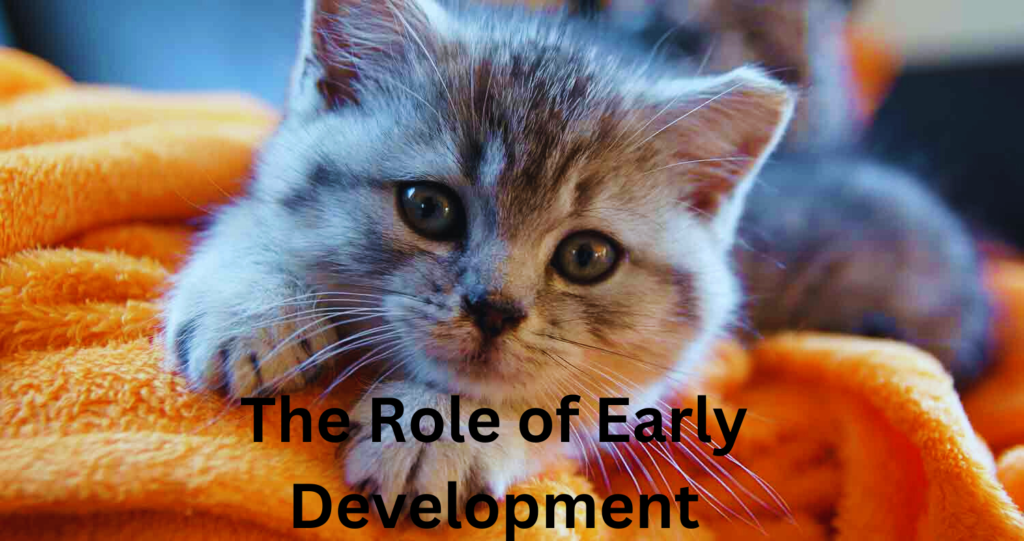Introduction
Cats known for their curious and sometimes puzzling behaviors. But perhaps none is as endearing yet enigmatic as their tendency to knead and bite blankets.
For years, cat owners have speculated about the reasons behind this adorable yet perplexing conduct. And now a groundbreaking study has shed light on the surprising motivations behind it.
Unraveling the mystery of why cats exhibit such behavior not only deepens our understanding of feline psychology. But also provides valuable insights into our beloved pets’ inner workings.
So buckle up, feline enthusiasts, as we delve into the fascinating world of cat behavior. And uncover the unexpected revelations that may just change the way you view your furry companions. Why Cats Knead and Bite Blankets!
Understanding feline behavior
As feline enthusiasts, we’ve long captivated by the curious behaviors of our beloved cats. Among the most intriguing actions is their kneading and biting of blankets or soft surfaces.
While these behaviors may seem perplexing at first glance, researchers have unveiled surprising insights into their origins.
The act of kneading, also known as making biscuits, dates back to a cat’s infancy. When they would instinctively knead their mother’s belly to stimulate milk flow while nursing.
This action triggers a sense of comfort and security in adult cats. Reminiscent of the warmth and safety they experienced as kittens.
Furthermore, biting during this process can seen as a throwback to hunting instincts.
Veterinarians suggest that the act of biting while kneading blankets may stem from an innate desire. To mark territories or exhibit dominance. A behavior inherited from their wild ancestors.
By understanding these primal motivations behind such seemingly simple actions. We gain a deeper appreciation for our feline friends’ complex nature. Why Cats Knead and Bite Blankets!
The Origins of Kneading and Biting
Comfort and security are fundamental to a cat’s emotional well-being. When our feline friends knead and bite blankets, it’s not just adorable behavior—it’s a powerful instinctive response.
As natural hunters, cats have an innate need to create a comfortable. And secure environment where they can relax and feel safe.
Kneading helps them release tension, much like a human getting a massage. While biting the blanket mimics the sensation of catching and subduing prey in the wild.
Moreover, for domesticated cats, kneading and biting blankets can also be ways of marking their territory with their scent.
By leaving their pheromones on the blankets through these actions. Cats establish a sense of ownership and comfort in their surroundings.
From this perspective, we see that these seemingly simple behaviors actually serve as important expressions of comfort. Seeking and security-building instincts in our beloved feline companions.
The Surprising Truth: How Cats’ Broken Toes Recover?
Comfort and Security
Have you ever wondered why your cat kneads and bites blankets, or perhaps even your own clothing?
This instinctual behavior actually harks back to their kitten days. When they would knead on their mother’s belly to stimulate milk flow.
Even as adults, cats retain this instinct as a way to comfort themselves. Or mark their territory with scent glands located in their paws.

Furthermore, the act of biting while kneading is also a remnant of kitten behavior. When they would nibble on their mother’s teats during nursing.
Understanding these instinctual behaviors sheds light on the intricate world of feline communication. And provides a deeper appreciation for our mysterious feline friends.
Additionally, the rhythmic motion of kneading may also serve as a self-soothing mechanism for cats. Similar to how humans find comfort in repetitive actions like tapping a pen or rubbing a worry stone.
This behavior can particularly pronounced in indoor cats that might not have the opportunity to express their natural instincts through hunting or climbing.
By providing appropriate outlets for these instincts such as scratching posts and interactive toys. Cat owners can ensure that their furry companions are able to engage in normal behaviors and lead happier lives.
Instinctual Behaviors
Communication and bonding between humans and cats go beyond verbal exchanges and cuddles.
Cats often use kneading and biting blankets as a form of communication and bonding with their owners.
When a cat engages in kneading, it’s a behavior reminiscent of kittenhood when they would nurse from their mother.
This action can signify comfort, trust, and the desire for closeness, serving as a way for the cat to bond with its human family.
Similarly, gentle nibbling or “love bites” on blankets could be an expression of affection or an attempt to initiate play with their owners.
By understanding these subtle forms of communication, pet parents can develop stronger bonds with their feline companions, creating a deeper sense of trust and companionship.
Furthermore, observing a cat’s body language during kneading or biting can provide valuable insights into their emotional state.
For instance, dilated pupils or relaxed ears are signs that indicate contentment and pleasure during these behaviors.
By responding positively when your cat engages in these actions—whether by gently petting them while they knead or offering interactive play session.
The bond between you both is reinforced as your pet feels understood and appreciated in this unique form of communication.
Communication and Bonding
Intriguingly, early development plays a fundamental role in shaping a cat’s behavior, including the quirky yet endearing habit of kneading and biting blankets.
Studies have shown that these behaviors are often linked to the kitten’s formative period, where they instinctively knead their mother’s belly to stimulate milk flow during nursing.
This act of kneading, also known as milk treading, is imprinted in their memory and continues into adulthood as a comforting behavior.
Furthermore, the act of biting blankets can be traced back to the teething stage during early development.
Kittens explore the world around them by using their mouths, which often includes grabbing and chewing on various objects—blankets being one of them.
This exploration helps strengthen their jaw muscles and provides relief for teething discomfort.
Understanding these early developmental influences sheds new light on the seemingly mysterious feline behaviors, deepening our appreciation for our furry companions’ natural instincts.
The Role of Early Development
In conclusion, the complex behavior of cats continues to fascinate and intrigue us.
The act of kneading and biting blankets may be traced back to their kittenhood. Where these behaviors were essential for survival and comfort.
Understanding this instinctual behavior can help us provide better care for our feline friends, ensuring they feel secure and content in their environment.
It’s also important to recognize that each cat is unique, with individual preferences and personality traits that can influence their behaviors.

Some cats may knead and bite blankets as a way to release tension or express affection, while others may do so out of boredom or as a response to environmental stimuli.
By observing our cats closely and paying attention to their body language, we can gain valuable insights into their emotional well-being and cater to their specific needs more effectively.
By delving deeper into the reasons behind these seemingly quirky behaviors, we not only gain a greater understanding of our feline companions but also strengthen the bond between human and cat.
It’s clear that there is still much to learn about the intricate world of cat behavior, offering endless opportunities for further exploration and discovery.
Conclusion: Insights into cat behavior
In conclusion, the study on cat behavior has shed light on the intriguing reasons behind cats’ kneading and biting of blankets.
It’s fascinating to discover that these behaviors are deeply ingrained in feline instincts, harking back to their kittenhood when they kneaded their mother’s belly to stimulate milk production.
This insight challenges the conventional belief that cats only display these actions out of comfort or affection, suggesting a more primal motivation at play.
Furthermore, the revelation that cat biting blankets might be linked to scent-marking behavior adds a layer of complexity to our understanding of feline habits.
The idea that cats engage in this behavior as a way of marking their territory or leaving their scent is both surprising and thought-provoking.
As pet owners, recognizing these deeper motivations behind our furry companions’ actions can foster a greater understanding and appreciation for the complex world of cat behavior.
FAQs
- Why do cats knead blankets?
Cats knead blankets as a throwback to kittenhood, when they kneaded their mother’s belly to stimulate milk flow. - Is it normal for cats to bite blankets?
Yes, biting blankets is a natural behavior for many cats and can be a sign of contentment or playfulness. - Can blanket biting and kneading indicate anxiety in cats?
In some cases, yes. If your cat excessively bites or kneads blankets, it could be a sign of stress or anxiety. - How can I discourage my cat from damaging my blankets while kneading and biting?
Provide alternative surfaces such as scratching posts or mats for your cat to knead, and use positive reinforcement to redirect them from the blankets. - Are there any health concerns associated with blanket-kneading and biting in cats?
Generally, these behaviors are harmless, but it’s important to monitor your cat for signs of dental issues or ingestions of fabric fibers. - Should I be concerned if my cat suddenly starts kneading and biting blankets more frequently than before?
Any sudden change in behavior should prompt a visit to the veterinarian to rule out any underlying health issues. - Are there specific types of blankets that are more appealing to cats for kneading and biting?
Different textures may attract cats more than others, so experiment with various fabrics to see what your cat prefers. - How can I create a safe and comfortable environment for my cat to express their natural behaviors like kneading and biting?
Provide cozy bedding, toys, and regular interactive playtime with your cat to help satisfy their instincts and keep them happy.
